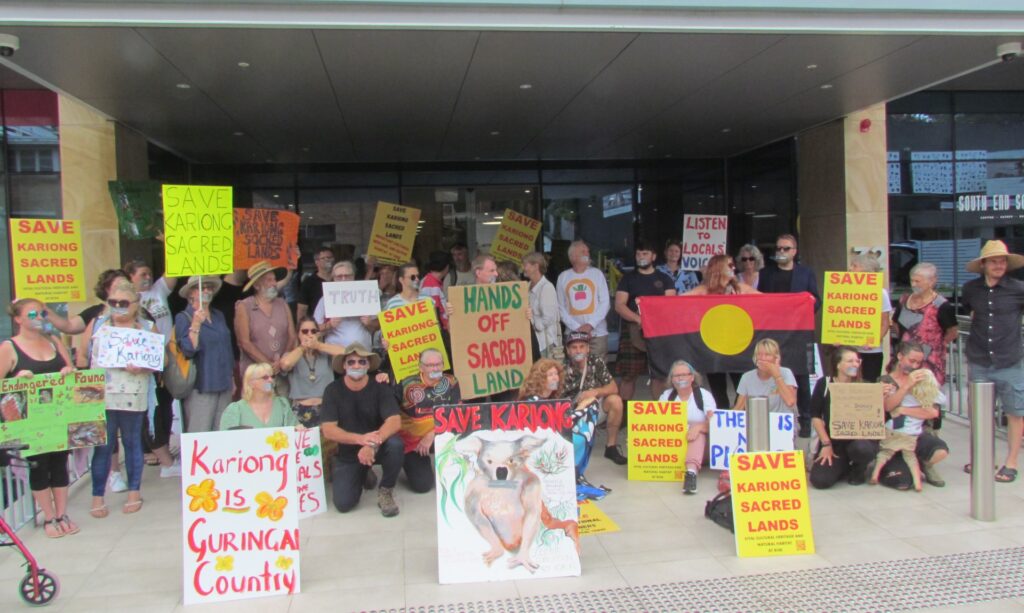Supporters rallying for the protection of Conservation Land (Lots 512 and 513, DP727686) along Woy Woy Rd, Kariong, gathered outside the Department of Planning, Housing and Infrastructure’s Central Coast offices in Mann Street, Gosford, on Friday, February 16th.

The silent protest aimed to highlight a lack of transparency and fairness during the recent Community Consultation Phase of the proposal to rezone conservation (C2) land for residential development, where an unknown number of public submissions appear to have been lost.
During the critical public consultation period, which closed on January 29, 2024, community members reported difficulties engaging with the process.
Many individuals who submitted via the NSW Dept of Planning Portal did not receive confirmation emails, raising concerns about the integrity of the process.
Despite years of campaigning by groups like Coast Environmental Alliance (CEA) and Save Kariong Sacred Lands, to protect the environmentally and culturally significant land, issues with the submission process have escalated the situation.
Serious doubts have been raised regarding the democratic integrity of the process to rezone the land which is owned by the Darkinjung Local Aboriginal Land Council (DLALC).
Lisa Bellamy, of Save Kariong Sacred Lands, said: “Our silent protest was a symbolic representation of how public voices have been stifled. We will never know how many public submissions were not received.
“After the protest our spokespeople approached the Customer Service desk of the NSW Department of Planning to voice our concerns in person only to find that there was no customer service. The lack of face to face customer service at the NSW Department of Planning’s Central Coast office only reinforces our concerns.”
Environmentalists, community advocates and local Traditional Custodians oppose the project, citing concerns about irreversible biodiversity loss, endangerment of species, including the Eastern Pygmy Possum, Swift Parrot, and Powerful Owl, removal of threatened wetlands, and degradation of the adjoining National Park and Brisbane Water Catchment.
Critics argue that the project fails to acknowledge the ecological and cultural significance of the land. There has been an inconclusive evaluation of the area for Aboriginal heritage sites and questionable management plan for sites that have been located.
Additionally, concerns about strains on local infrastructure, housing diversity, and risks associated with urban sprawl have been raised.


